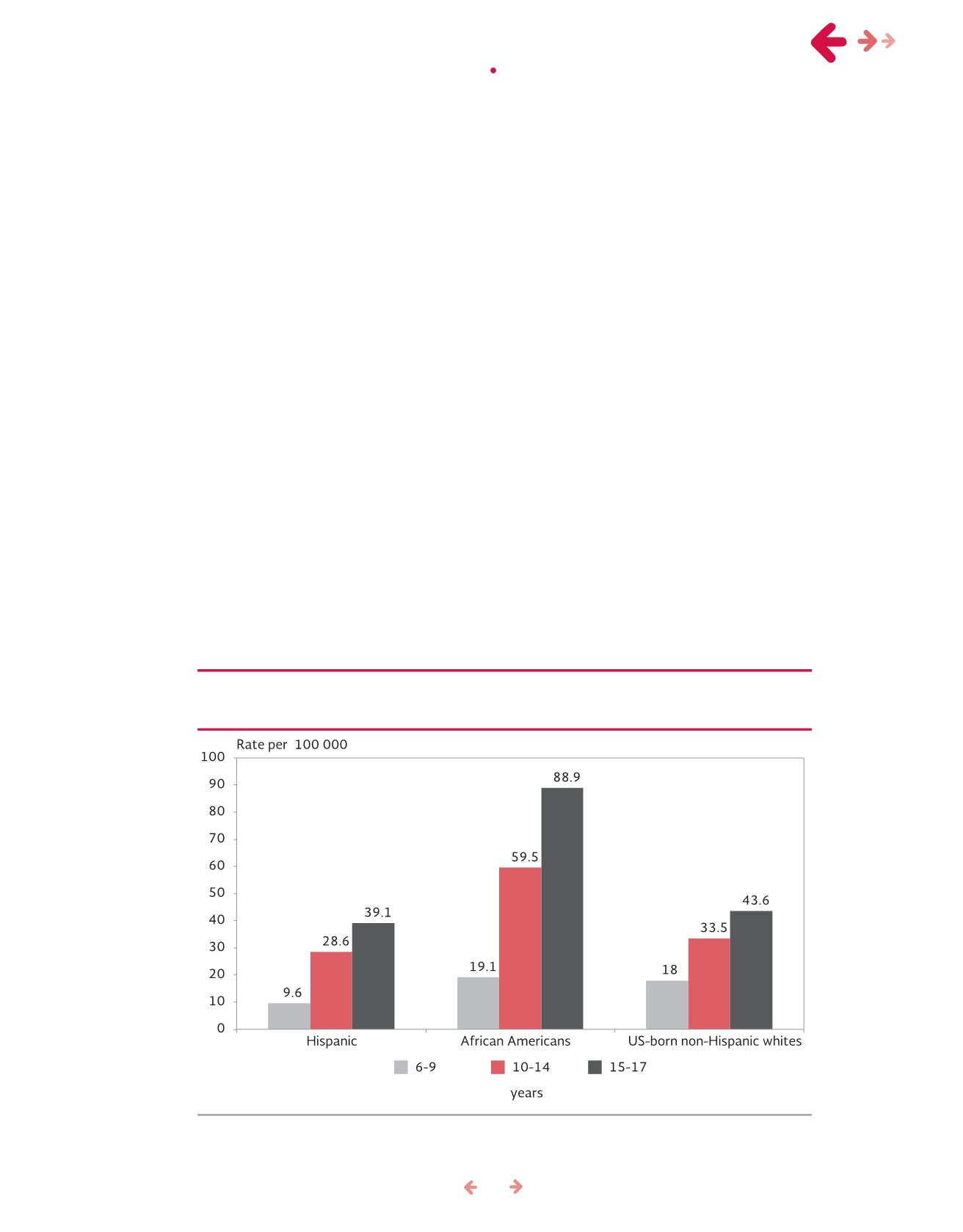
63
In2009, according todata from theAgency for
Health Research and Quality (ahrq), African Ameri-
cans between ages six and 19 years had the highest
rateof hospital admissions for diabetes complications
(53per100000), followedbynon-Hispanicwhites(32
per 100 000), and finally the Hispanic population at
25 per 100000 (Figure 49). AlthoughHispanics had
the lowest rateof hospital admissions, thedifferences
betweenHispanicsandnon-Hispanicwhiteswasmuch
lowerwhenexaminedover a tenyear period.
Hispanicadolescents have the second
highest percentageof treatment for
depressiveepisodes
In 2010, the percent of adolescents receiving
treatment for a depressive episodewas slightly higher
among non-Hispanic whites (41%) than among the
Hispanic population (38%), followed by much lower
rates forAfricanAmericans (23%) (Figure50).
Adults
Mexican immigrants display the lowest percentage
of heart disease, cancerandhypertensiondiagnosedby
ahealthprofessional in comparison toother groups (Fi-
gure 51). Nonetheless, this could be partly a reflection
of their loweruseofmedical services that leads to lower
rates of diagnosis, rather than an indicationof lower di-
sease rates. In addition, Mexican immigrant adults are
younger than theUS-bornpopulation, andeachof these
conditionsbecomesmorecommonwith increasingage.
Mexicanadults reported thehighest increase
inpersons diagnosedwithdiabetes
Diabetes, which is directly related to overweight and
physical inactivity, is a growing problem among the
Mexican and Hispanic populations. The percent of
diagnosed diabetes amongMexican immigrant adults
(8.1%) is only lower than that of African Americans
Source: ProducedbyCONAPO, basedon theAgency forHealthcareResearchandQuality, 2009.
Figure49.Minors in theUnitedStates havingbeenadmitted tohospital
for diabetic complications, byagegroupandethnicityor race, 2009
chapter i i i •
risk factors and health conditions


